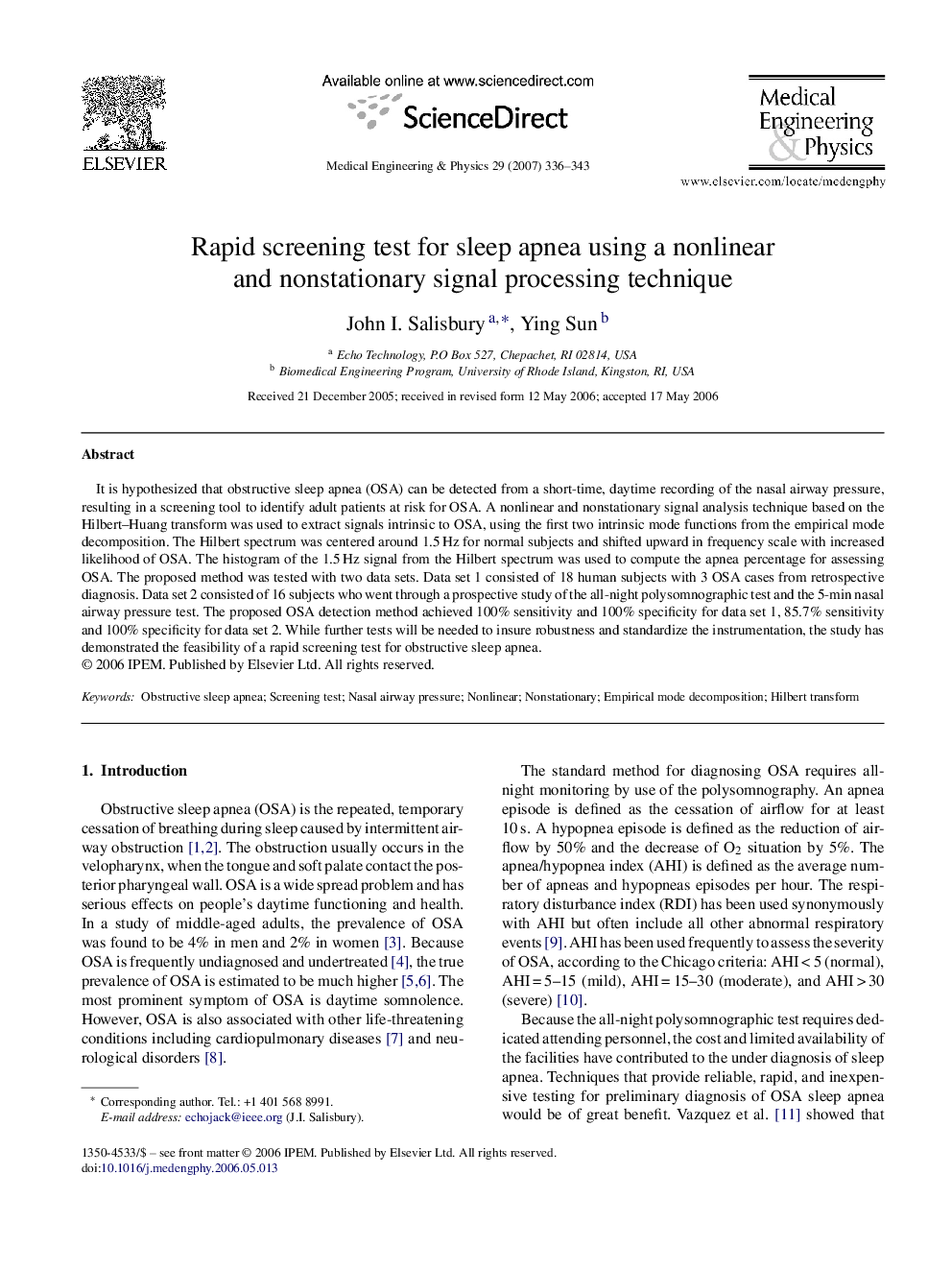| Article ID | Journal | Published Year | Pages | File Type |
|---|---|---|---|---|
| 876776 | Medical Engineering & Physics | 2007 | 8 Pages |
It is hypothesized that obstructive sleep apnea (OSA) can be detected from a short-time, daytime recording of the nasal airway pressure, resulting in a screening tool to identify adult patients at risk for OSA. A nonlinear and nonstationary signal analysis technique based on the Hilbert–Huang transform was used to extract signals intrinsic to OSA, using the first two intrinsic mode functions from the empirical mode decomposition. The Hilbert spectrum was centered around 1.5 Hz for normal subjects and shifted upward in frequency scale with increased likelihood of OSA. The histogram of the 1.5 Hz signal from the Hilbert spectrum was used to compute the apnea percentage for assessing OSA. The proposed method was tested with two data sets. Data set 1 consisted of 18 human subjects with 3 OSA cases from retrospective diagnosis. Data set 2 consisted of 16 subjects who went through a prospective study of the all-night polysomnographic test and the 5-min nasal airway pressure test. The proposed OSA detection method achieved 100% sensitivity and 100% specificity for data set 1, 85.7% sensitivity and 100% specificity for data set 2. While further tests will be needed to insure robustness and standardize the instrumentation, the study has demonstrated the feasibility of a rapid screening test for obstructive sleep apnea.
